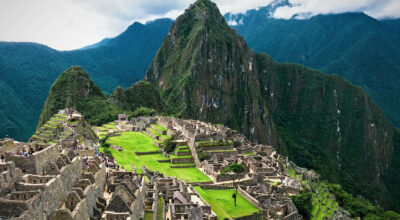Simraungadh: Fort Of Madhes Used To Conquer Kathmandu!

Simraunghadh
Simraunghadh is an archeological site. This place is also known as Simara Vangarh, Simmangada, Pata, etc. There are various archeological artifacts and relics from the 11th to 14th century ‘Simraun Kingdom’ or ‘Karnatavanshi Kingdom’ and 1800 years old Gupta period. Simraunghadh, which has historical and archeological significance, is located in the southeastern part of Bara district under Province No. 2.
Emergence of Karnatavanshi Maharajas
Nanyadeva established the Karnat dynasty in 1097 BS at Simraunghadh . He was succeeded by at least five rulers, Ganga Dev, Narasimha Dev, Ram Singh Dev, Shaktisingh Dev and Harisingh Dev, from Koshi to Gandaki and from the Mahabharata range to the Ganges.

According to the Gopal Raj genealogy, the kings had attacked the valley four times. After the cultural link between the Himalayan state and South India was duly established by Shankaracharya, even the people of Karnataka continued this tradition with the exchange of art and literature. Simraunghadh
However, there is no consensus among scholars on the origin of the Karnatavanshi Maharajas of Tirbhukti.The Carnatic dynasty is associated with the invasion of the Chalukyas in northern India during the reign of Someshwar (I) and Vikramaditya (VI) in the late eleventh century. Nanyadev is a contemporary of Rampal, Madanpal, Vijay Sen of Bengal, Govindacharya Gaharwal of Valla Senus Kannauj and Raghav of Kalinga. He had established his skills in both war and peace development.Simraunghadh
The Devpara records prove that the Tirhutiya Karnats and the Bengal Sens were in conflict. Nanyadeva had succeeded in perpetuating his rule and he had established his kingdom as far as Nepal. Nanyadeva probably enlisted the help of the Chalukya king Vikramaditya (VI) to dominate the region. Who invaded Nepal shortly after 1068.
According to the French historian Sylvian Leby, Nanyadeva first served as the Chalukya king’s general, but as the power of the Chalukya king waned, he made his territory sovereign.
Visit of Tibetan monk Dharmaswamy to Simraunghadh

Among the details before the destruction of the Simraungadh kingdom, the Tibetan monk Dharmaswamy has described the kingdom in great detail in his autobiography. Dharmaswamy had visited Simraungadh in 1236 BS during his pilgrimage to Tirhut .Tirbhukti or Tirhut was then ruled by Ram Singh Dev and he welcomed Dharmaswamy to his court. Dharmaswamy fell ill during the journey to Tirhut. Therefore, his stay in Simraungadh was very long. When he recovered, Maharaja Ram Singh asked him to become his high priest. However, Dharmaswamy politely refused, saying he wanted to return to Tibet. Maharaja Ram Singh bade him farewell with gold and other necessities for the journey. Simraungadh
According to Dharmaswamy in his autobiography, at that time there was terror among the Ottoman invaders. In view of this danger, the majestic fortifications of Simraungadh were being strengthened by the Maharaja.
Simraungadh was the center of scholarly work in the Bideha and Tirhut areas. The emperors appointed a group of scholars as their advisers, and the prime minister was one of the most famous scholars. Some of the great scholars of Karnataka were as follows: Chandeshwar Thakur, Jyotirishwar Thakur, Vachaspati Mishra, Devaditya, Karmaditya, Ram Dutt, etc.

Even the poet Kokil Vidyapati was a member of the family of eminent scholars of Simraungadh. Some of the important works composed during the Karnataka period include various Asht Ratnakars of Chandeshwar Thakur, Rajneeti Ratnakar, Kritya Ratnakar, Grihastha Ratnakar, Shuddhi Ratnakar, Dan Ratnakar, Pooja Ratnakar, Vyavar Ratnakar and Vivad Ratnakar.
Apart from this, the adult book Varna Ratnakar written by Jyotirishwar Thakur in the regional language of Madhes was also written in Simraungadh. These works discuss the various dimensions of the daily work duties of kings and emperors and the common people.
Relationship of Karnatavanshi with the Mallas of the valley and India

The Malla kings of the 17th century Kathmandu Valley, especially Pratap Malla and Jagjyoti Malla, in their writings have addressed Nanya Dev as the ‘principal ancestor’ with high respect. According to him, the kings of Karnataka had developed a very enlightened and public welfare oriented religion. It institutionalized a positive and dynamic socio-political culture.
This culture was later further nurtured by the Neva: Malla kings, who were more tolerant, rational, liberal, equal and based on social justice than the brutal medieval political culture.Simraungadh
The Mallas of Nepal had declared themselves as ‘Raghuvanshi’. The Raghuvanshi deity Tulja (Taleju) worshiped Bhavani as their own ‘Kool Devi’ and adopted the ‘Mandav Gotra’ of the Karnataka Raghuvanshi Nanyadev.
Another historian, Lila Bhakti Munsakarmi, has made it clear that the ‘Devimaju’ worshiped by Nanyadev was actually Tulja (Taleju) and was separate from the Licchavi family goddess ‘Maneshwari’.
Taleju Bhavani is a deity of the South Indian dynasties, especially of the Karnataka rulers. She is also called Tulaja Bhavani and has various other names such as Tulja, Turja, Tvarita and Amba.Simraungadh
Fortification of Simraungadh – a labyrinth

A labyrinth-type fort in Simraungadh is engraved on a stone in the Bhaktapur palace, and the coins issued by the Malla kings of Bhaktapur bear the imprint of the structure.The Italian priest Casiano (1708–1791) visited Simraungadh during his visit to Nepal and Tibet. He describes the labyrinth and structure of Simraungadh as a state-of-the-art sophisticated structure, and his sketch was translated and published by Luciano Pitek.Hudson also described the existence of seven walls on the east and four walls on the west during his visit around 1835, which may have been used to construct a circular structure.
How to develop Simraungadh ?

According to the report of the excavation carried out by the Italian team in January and February of 1947 BS and also in January and February of 2048 BS, the remains of human settlements of four periods were found in Simraungadh . According to their report, the history of this region goes back to the Gupta period, i.e. 1800 years before today.The Department of Archeology should initiate such a huge study. The department also has experience in the study conducted by Kenzo Tange’s team in Lumbini. Only then can Simraungadh be included in the World Heritage List and the country will take another leap in the field of heritage conservation internationally.
FAQ’S
Who attacked over the Kathmandu Valley?
What were the another name of Simraungadh?
Who is the last Malla King of Kathmandu?
What were the kingdoms of Kathmandu valley before unification?
Where is Simraunghad ?
What is the History of Simraunghad?






